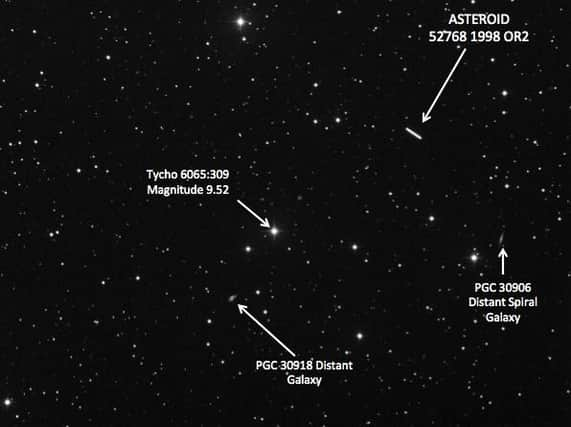Lancashire astronomer snaps rare image of 'potentially hazardous' asteroid as it passes by earth


Len Adam used a remote telescope based in Siding Spring, Australia, to take the shot of the asteroid, which poses no threat to earth, on Tuesday.
The asteroid is classed as potentially hazardous as it will pass within 4.6 million miles of earth at its closest point on April 29.
Advertisement
Hide AdAdvertisement
Hide AdOfficially named 1998 OR2, the space rock is described as "half the size of Everest", and will fly by at almost 19,500 miles per hour.
Len, who spends most of his time in Andalucia, Spain, where his observatory is based, is currently locked down in Buckshaw Village.
"Normally if you image an asteroid, another name for a minor planet, it is just a dot looking like a star.
"Because this is so 'close' in a five minute exposure its movement can be detected, giving a rail as you can see in the image.
Advertisement
Hide AdAdvertisement
Hide Ad"The asteroid is too faint to be seen with the naked eye or standard binoculars.
"I was lucky to capture it."
He explained how he used a remote telescope with a tube diameter of 43 cm (17 inches) to take the image of the asteroid, which is around two miles wide.
Remote telescopes can be accesses by anyone with internet access - you have to pay for usage charges based on the exposure.
Siding Spring in New South Wales, Australia, is the site of the massive Anglo-Australian telescope (AAT) along with a number of other telescopes.
Asteroids are large rocks that orbit around the sun.
Advertisement
Hide AdAdvertisement
Hide AdOften, due to gravitational pulls from planets, they can be moved off course and can collide with planets and other debris in space.
They differ to meteors, which are smaller rocks that fly around our solar system.
When these crash down through earth's atmosphere, they burn up and vaporise, causing what we know as a "shooting star".